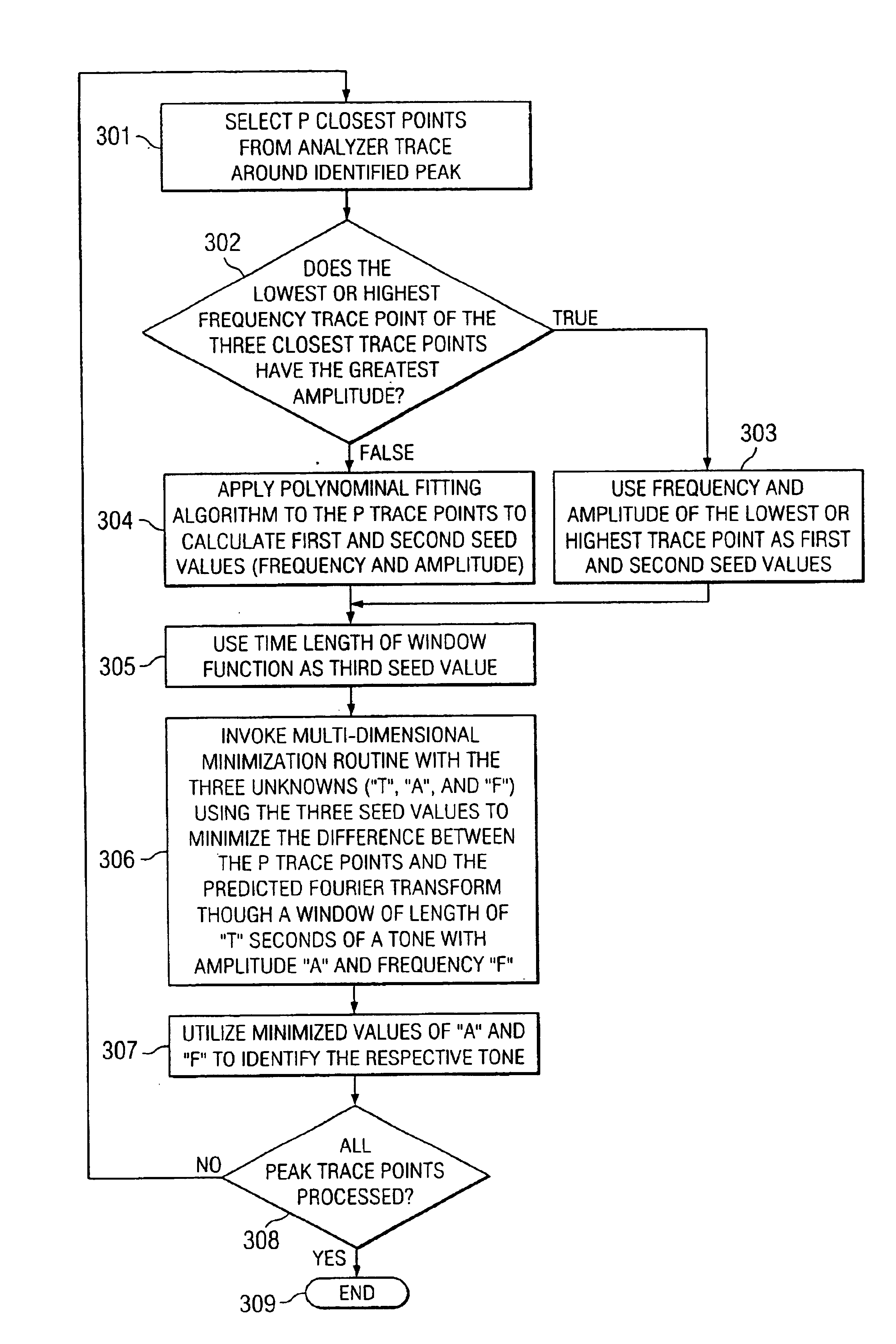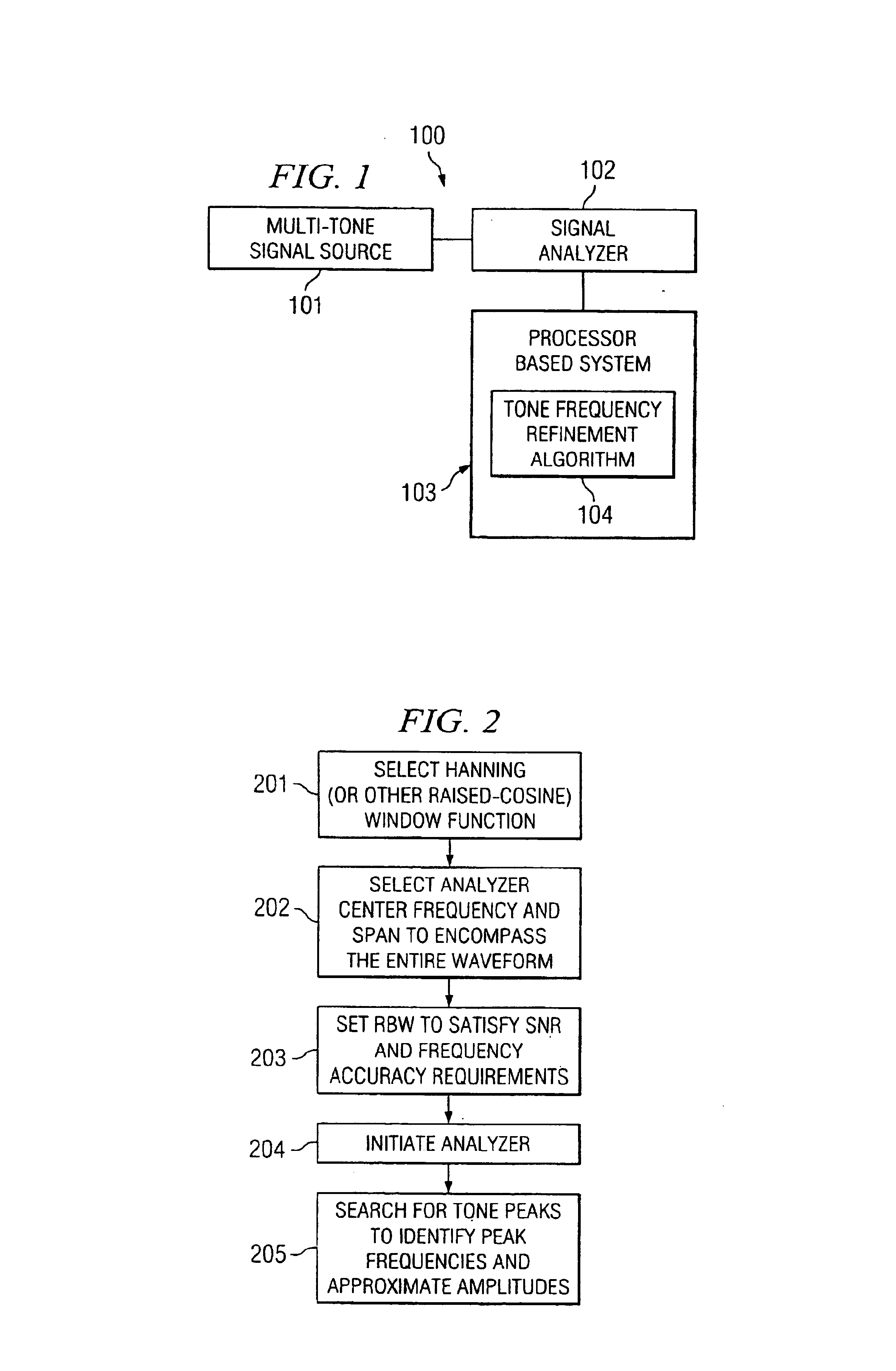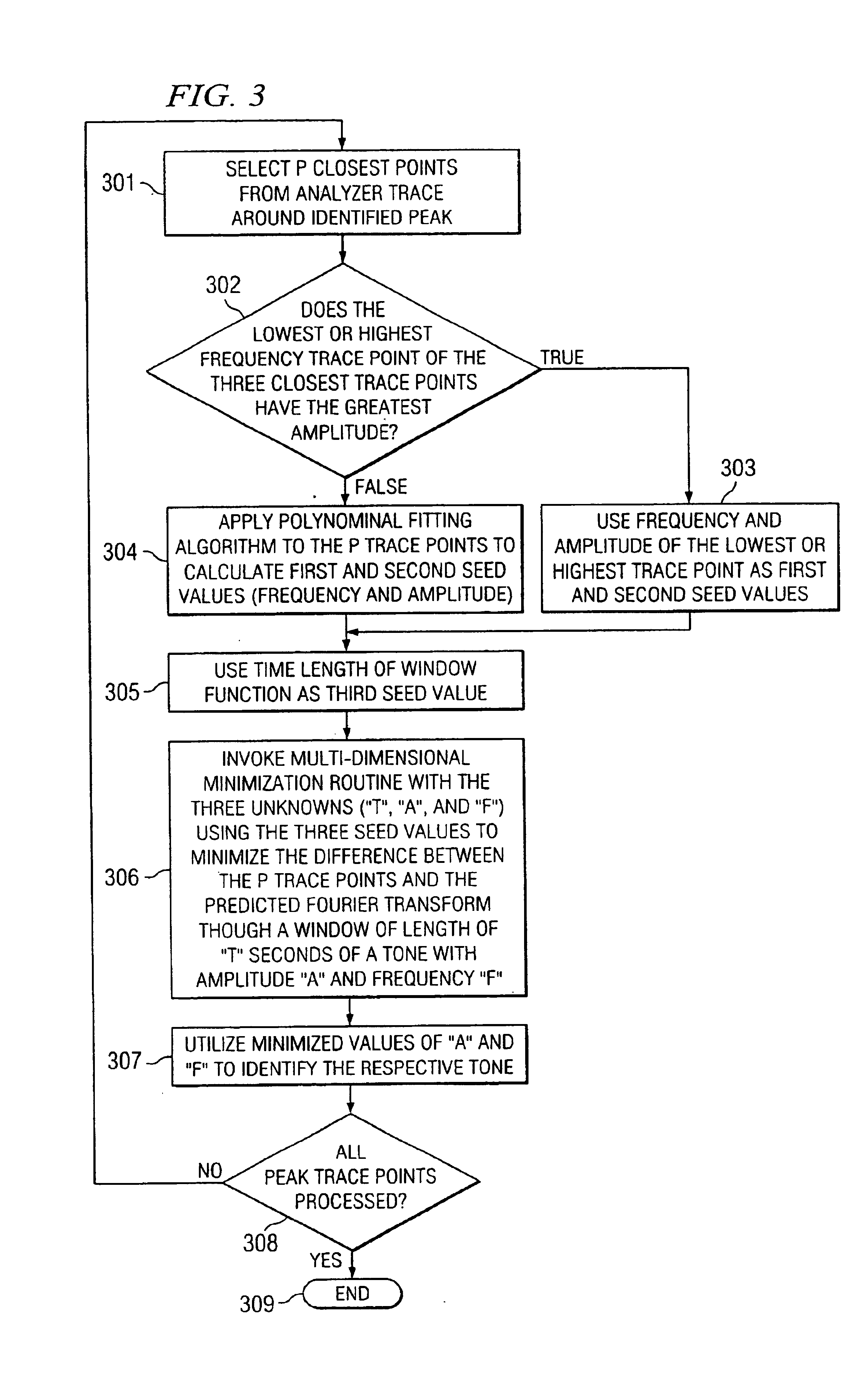Systems and methods for performing analysis of a multi-tone signal
- Summary
- Abstract
- Description
- Claims
- Application Information
AI Technical Summary
Benefits of technology
Problems solved by technology
Method used
Image
Examples
Embodiment Construction
Referring now to the drawings, FIG. 1 depicts system 100 for analyzing a multi-tone signal according to representative embodiments. System 100 includes multi-tone signal source 101 and signal analyzer 102. Signal analyzer 102 maybe implemented utilizing any number of commercially available signal analyzers such as Agilent Technologies, Inc.'s 89400 and 89600 series VSAs. Signal analyzer 102 may be communicatively coupled to processor-based system 103 (e.g., a personal computer). Processor based system 103 may comprise executable instructions stored on a suitable computer readable medium to define tone refinement algorithm 104 that is described in greater detail below. By receiving data associated with the trace generated by signal analyzer 102, tone refinement algorithm 104 may process the data to provide accurate amplitudes and frequencies of signal peaks in a multi-tone signal with a relatively low amount of complexity. Although tone refinement algorithm 104 is shown as being impl...
PUM
 Login to View More
Login to View More Abstract
Description
Claims
Application Information
 Login to View More
Login to View More - R&D
- Intellectual Property
- Life Sciences
- Materials
- Tech Scout
- Unparalleled Data Quality
- Higher Quality Content
- 60% Fewer Hallucinations
Browse by: Latest US Patents, China's latest patents, Technical Efficacy Thesaurus, Application Domain, Technology Topic, Popular Technical Reports.
© 2025 PatSnap. All rights reserved.Legal|Privacy policy|Modern Slavery Act Transparency Statement|Sitemap|About US| Contact US: help@patsnap.com



